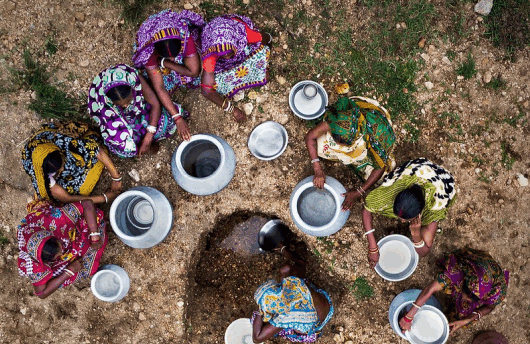
The Centrality of Protection (CoP) is an IASC commitment and policy that affirms that, “protection of all persons affected and at risk must inform humanitarian decision-making and response, including engagement with State and non-State parties to conflict.” Protection is defined as freedom from all forms of violence, coercion, and deliberate deprivation. This means that humanitarian action cannot be delivered on needs alone but must be informed by protection risk analysis thereby ensuring that protection is central to all efforts in preparedness, immediate and life saving activities, and throughout the duration of humanitarian response.
Centrality of Protection Toolkit Expand All
The IASC Policy on Protection in Humanitarian Action: an Aide-Memoire (Aide-Memoire) is intended to clarify and reinforce the key elements of the IASC Policy on Protection in Humanitarian Action of 2016 (IASC Protection Policy). It is aimed at Humanitarian Coordinators and Humanitarian Country Teams (HCTs) to support their implementation of the Policy at country level and was developed in consultation with field practitioners. It should be read in conjunction with both the IASC Protection Policy and the Benchmarks for HCT Collective Implementation of the IASC Policy on Protection in Humanitarian Action (the IASC Protection Benchmarks). The Aide-Memoire provides additional context and background information required for a comprehensive understanding the Protection Benchmarks. It highlights the responsibilities of HCTs to reduce protection risks in complement to or as part of the three benchmarks, including engaging local and non-humanitarian actors and measurement of outcomes. The document also answers common questions of field practitioners such as how non-protection clusters can contribute and what to do if a response has little or no demonstrable impact.
IASC Aide-MemoireThe IASC Benchmarks for Humanitarian Country Team Collective Implementation of the Policy on Protection in Humanitarian Action (Benchmarks) were developed by the Centrality of Protection Taskforce as an actionable and easy-to-use tool to support Humanitarian Coordinators (HCs) and Humanitarian Country Teams (HCTs). The Benchmarks lay out what actions should be taken by the HCT, who is responsible, and how the action will be verified to successfully implement the Centrality of Protection approach at the country level. The three benchmarks – analysis and prioritization, response planning and implementation, and monitoring, learning and evaluation – are broken down into concrete actions and discrete outputs to facilitate greater uptake of the Policy on Protection. Crucially, the verification component of the Benchmarks provides accountability measures for the HC and HCTs that allow both HCT members and other actors to confirm compliance with the Policy.
IASC BenchmarksThe Measurement Framework provides HCTs with a tool to observe changes in protection risk patterns faced by community members such as changes in the behavior of armed actors towards civilians, or improvements in community-based threat monitoring systems to prevent protection violations occurring, or reductions in vulnerability of displaced persons to human trafficking or other forms of coercion or violence. Crucially, it provides tools for analyzing the contribution of the IASC mechanism towards these changes, alongside the influence of external actions and evolving crisis dynamics.
Measurement Framework for the Implementation of the CoPKey Centrality of Protection Reference Documents Expand All
This statement affirms the commitment of the IASC Principals to ensuring the centrality of protection in humanitarian action and the role of Humanitarian Coordinators, Humanitarian Country Teams and Clusters to implement this commitment in all aspects of humanitarian action.
IASC StatementThis policy defines the centrality of protection in humanitarian action, as per the December 2013 statement of the IASC Principals, as well as the process for its implementation at country level. In doing so, it seeks to reinforce complementary roles, mandates, and expertise of all relevant actors. Specifically, this policy emphasizes an IASC commitment to prioritize protection and contribute to collective protection outcomes, including through the development of an HCT protection strategy to address the most critical and urgent risks and violations. It also underlines the need to implement this commitment in all aspects of humanitarian action and across the Humanitarian Program Cycle (HPC).
IASC Policy on ProtectionSix years after the adoption of the Protection Policy, the IASC Principals commissioned this review to assess implementation of the Policy in a range of humanitarian crises. Using a systems thinking approach, the review identifies the critical issues that impacted the implementation of the Policy, but also addresses the key enablers of and barriers to progress. It also aims to identify practices that had brought about change, and whether the right incentive structures and behaviors were being displayed to bring about change.
Independent ReviewThe workshop, co-hosted by InterAction, the Food and Agriculture Organization (FAO), and the World Food Programme (WFP), brought together 17 IASC member organizations that have taken steps to internalize the Centrality of Protection. It aimed to identify and share lessons, common enablers, and barriers that support or hinder internalization; develop recommendations on how enablers could be catalyzed and barriers overcome; facilitate discussion and collaboration between donors and IASC organizations on internalization in policy, strategy, and operations; and discuss and shape interagency initiatives aimed at strengthening system-wide uptake.
Workshop ReportFollowing the Independent Review of the IASC Protection Policy, an action plan was developed and endorsed by IASC Principals in response to the recommendations set out in the report.
Action Plan
The IASC Protection Policy is applicable in all settings where there are IASC humanitarian coordination structures, but IASC member organizations may also find it relevant in other settings, including those transitioning out of humanitarian crises. The policy requires HCTs to ensure this approach is at the center of their collective humanitarian response mandating that HCTs – Humanitarian Coordinators (HC) and heads of HCT member organizations – work together to understand and seek to prevent, mitigate or end protection risks, including violations of international humanitarian and human rights law, that people affected by conflict or disaster face.
Centrality of Protection Timeline
Community of Practice for the Centrality of Protection
The Community of Practice was established after the IASC Task Force 1 on the Centrality of Protection (co-chaired by InterAction and OCHA) was dissolved by the IASC Secretariat at the end of June 2024. The momentum and interagency commitment to ensure the IASC-endorsed Action Plan (developed following the Independent Review of the IASC Protection Policy) continued, was impetus for the establishment of the Community of Practice. The Community of Practice is co-chaired by InterAction, OCHA, and UNHCR, with close collaboration with the Global Protection Cluster.
Key areas of work include:
- – A resource for HCs and HCT representatives to access information and support regarding the implementation of the IASC Protection Policy in their respective context. (With a view to eventually establishing a peer-to-peer component with interested/engaged HCs)
- – A platform to host ad-hoc thematic discussions and/or trainings to respond to additional questions and challenges that arise in the course of rolling out the CoP Toolkit, the country-level implementation of the policy, and in the process of internalization of CoP for IASC member organizations
- – A platform to support and facilitate discussion amongst global technical staff that are either working to implement CoP at the country-level or internalizing CoP within their respective organizations
- – A repository for technical tools, guidance, best practice etc.
- – An interface with the Donor Protection Group
- – A platform for the production of the annual report on the implementation of CoP and reporting on progress towards the implementation of the Action Plan
To learn more about the Community of Practice, please reach out to InterAction’s Director of Protection, Erin Weir (eweir@interaction.org).






